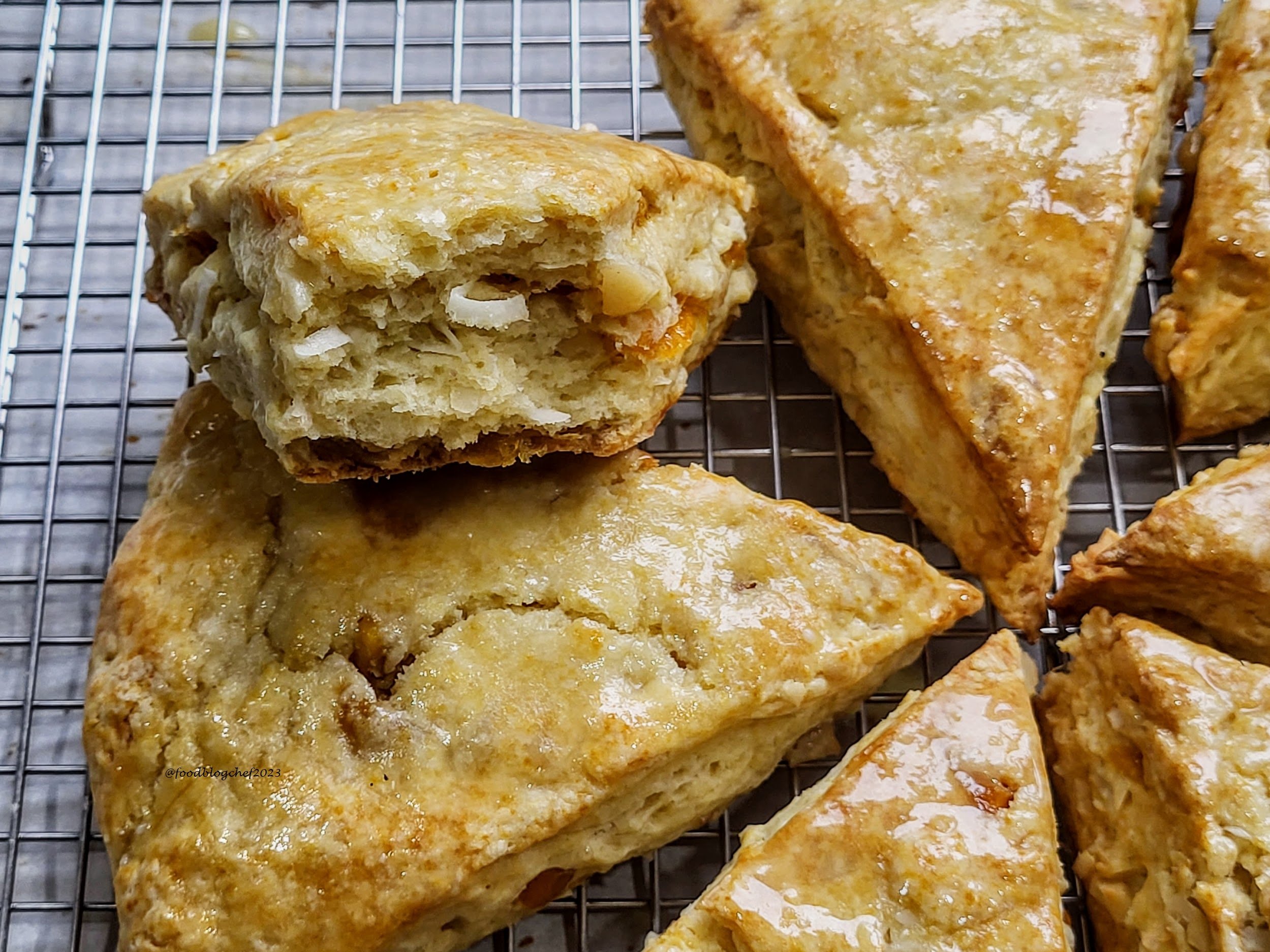Coconut Mango Macadamia Scones →
My ancestors in the British Isles would consider this recipe to be blasphemy. I apologize, but someone had to do it. These tropical scones are a treat with your morning coffee or afternoon snack and you don’t need jam. It’s all in there. Enjoy!
Coconut Mango Macadamia Scones
Yield about 8 scones
Ingredients:
¼ cup Coco Lopez
2 teaspoons baking powder
½ teaspoon baking soda
½ teaspoon kosher salt
3 cups all-purpose flour, plus more for surface
½ cup (1 stick) chilled, very cold, unsalted butter, cut into pieces (See *Note below)
1 large egg, beaten to blend
¾ cup heavy cream (Note: if you choose to brush the scones with cream before baking, increase the cream to 1 cup, reserving ¼ cup for brushing.)
½ cup diced mango
½ cup chopped macadamia nuts
¼ cup flaked coconut
1 tablespoon orange zest
2 tablespoons orange juice for glaze (freshly squeezed preferably)
Demerara or raw sugar (for sprinkling; optional)
Preparation:
Preheat oven to 375° F.
1. Whisk baking powder, baking soda, salt, and 3 cups flour in a large bowl to combine.
2. Add butter and toss to coat. Using your fingers or a pastry blender or a food processor on pulse to work the butter into the flour until you have a very coarse mixture with pea-size pieces of butter. If using a food processor, scrape the flour mixture into a large bowl.
3. Make a well in the center; add egg, cream, Coco Lopez, mango, nuts, coconut, and zest and mix with a fork, incorporating dry ingredients a little at a time, until a shaggy dough forms (it’s okay if it looks a little dry; don’t overwork).
4. Lightly knead the dough in the bowl until it just comes together.
5. Turn out onto a lightly floured surface and pat into a 1"-thick round. Cut into 8 wedges and transfer to a parchment-lined baking sheet.
6. Brush dough lightly with reserved cream and sprinkle with demerara sugar. (optional, if you don’t use the glaze recipe below)
7. Bake scones until golden brown, 25–30 minutes.
Remove scones from the oven and allow them to cool for 10-15 minutes before drizzling with the glaze. (optional)
For the Orange Glaze:
1/2 cup confectioners' sugar
2 tablespoons orange juice
1 teaspoon lemon zest (optional)
1 teaspoon butter
You can make the orange glaze in a double boiler, or for a simpler alternative, you can zap it in the microwave.
For the double-boiler method:
Mix the orange juice with the confectioners sugar in a heatproof bowl over a pot of simmering water until dissolved. Whisk in the butter and lemon zest until the glaze is smooth.
For the microwave:
In a microwave-safe bowl, melt the butter. Whisk in the juice, confectioners sugar, and lemon zest. Whisk the glaze to smooth out any lumps; if necessary microwave for an additional 30 seconds and whisk again to smooth out the glaze; then drizzle the glaze over the top of the scones. Let it set a few minutes before serving.
*Note: using a box grater to grate the cold butter provides a more even distribution of butter in your dough.
Adapted from: https://www.bonappetit.com/recipe/bas-best-cream-scones













